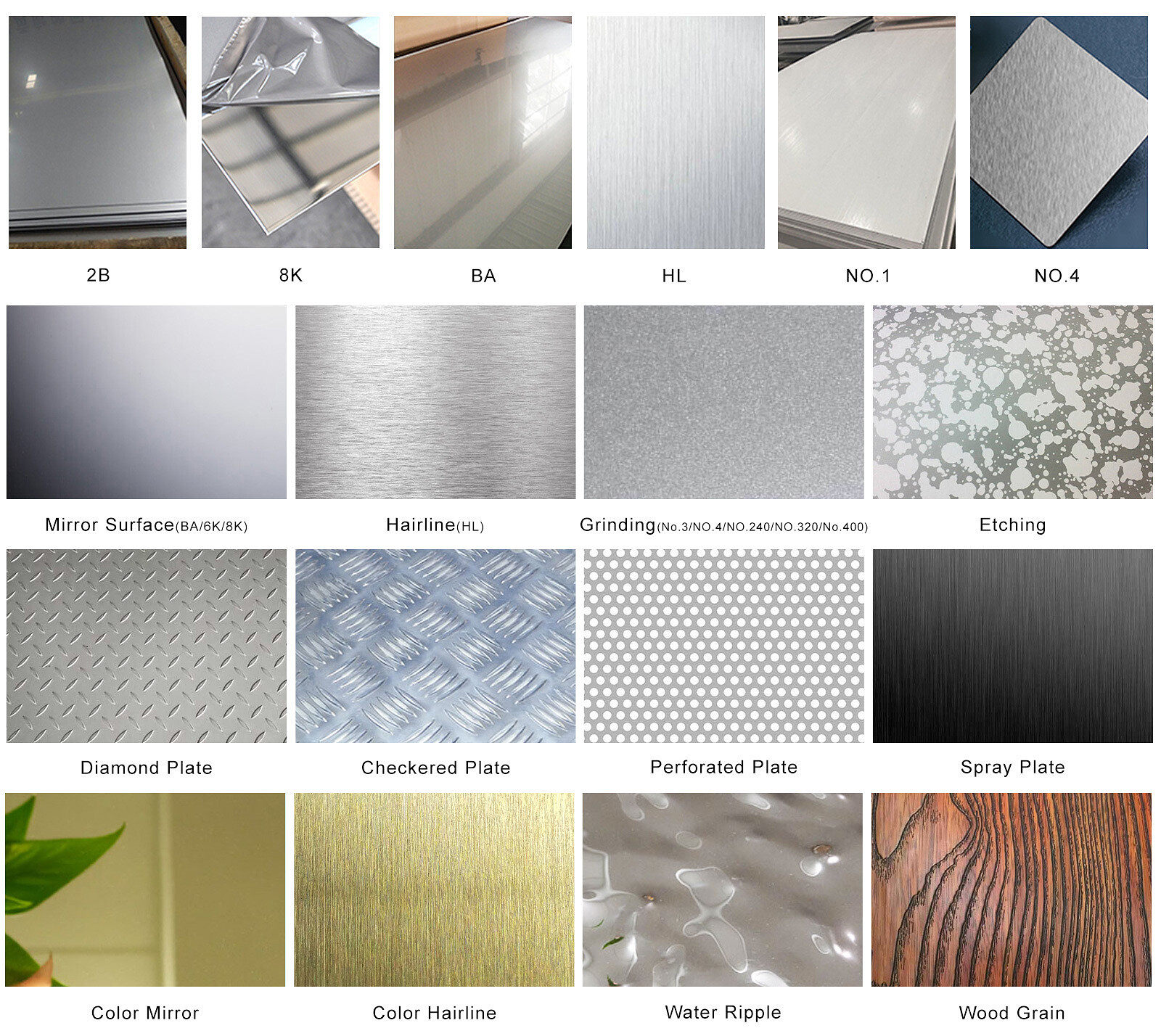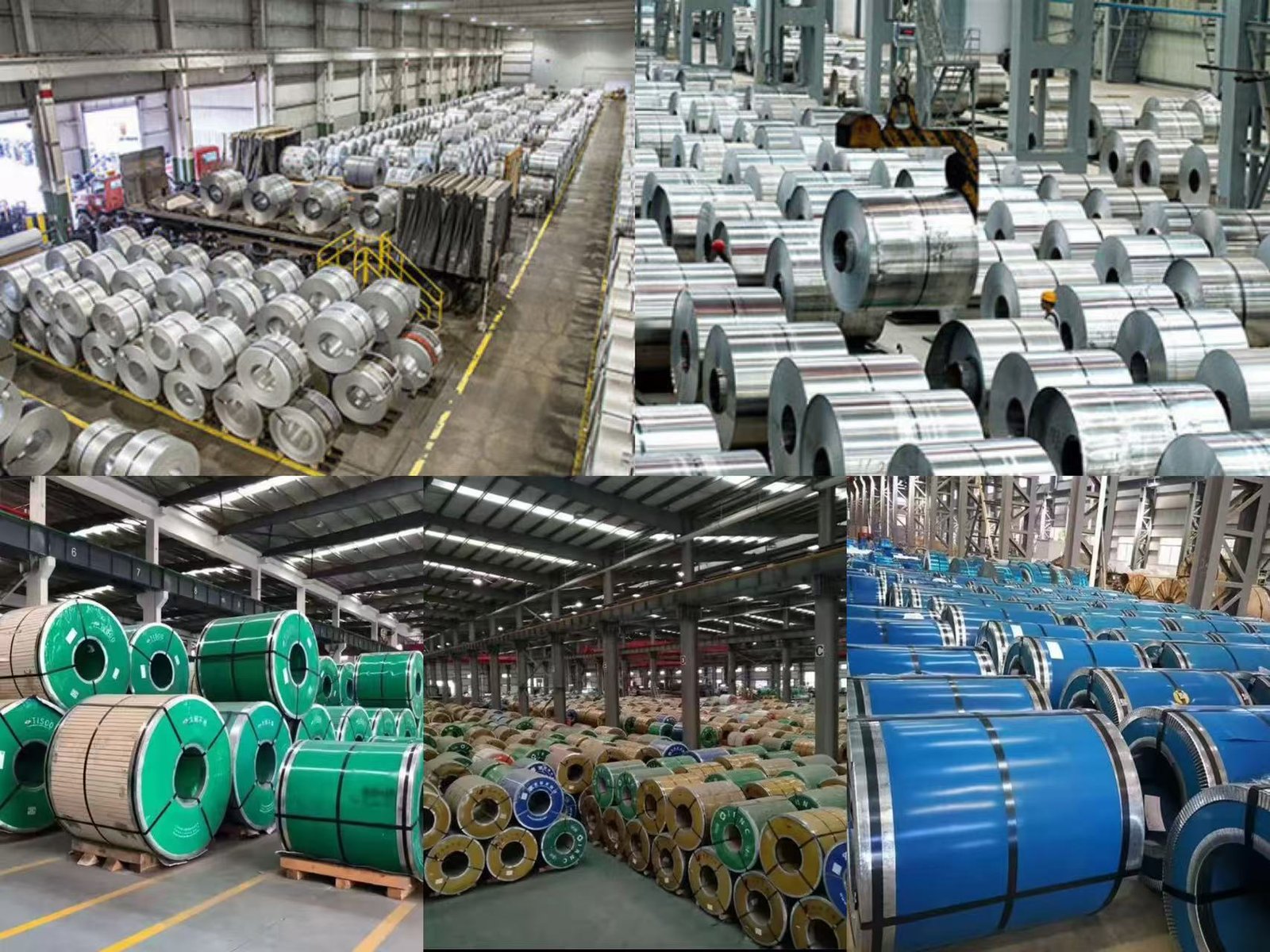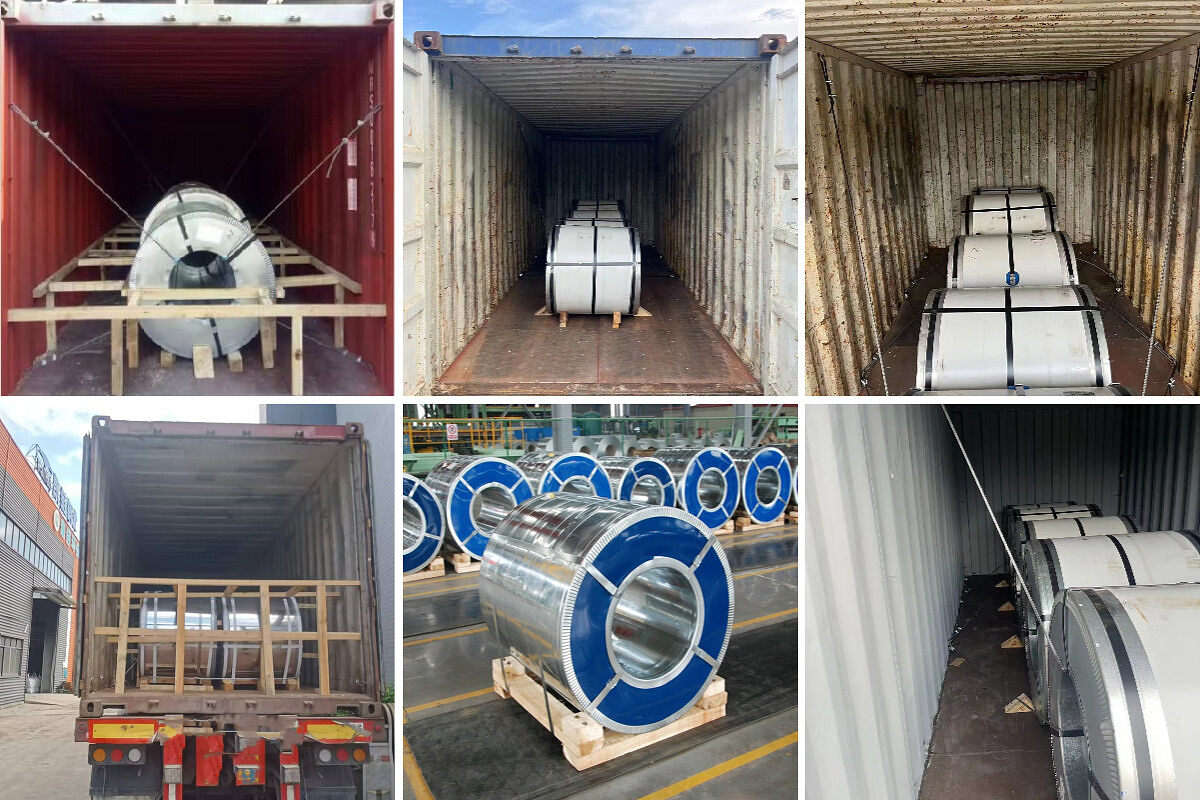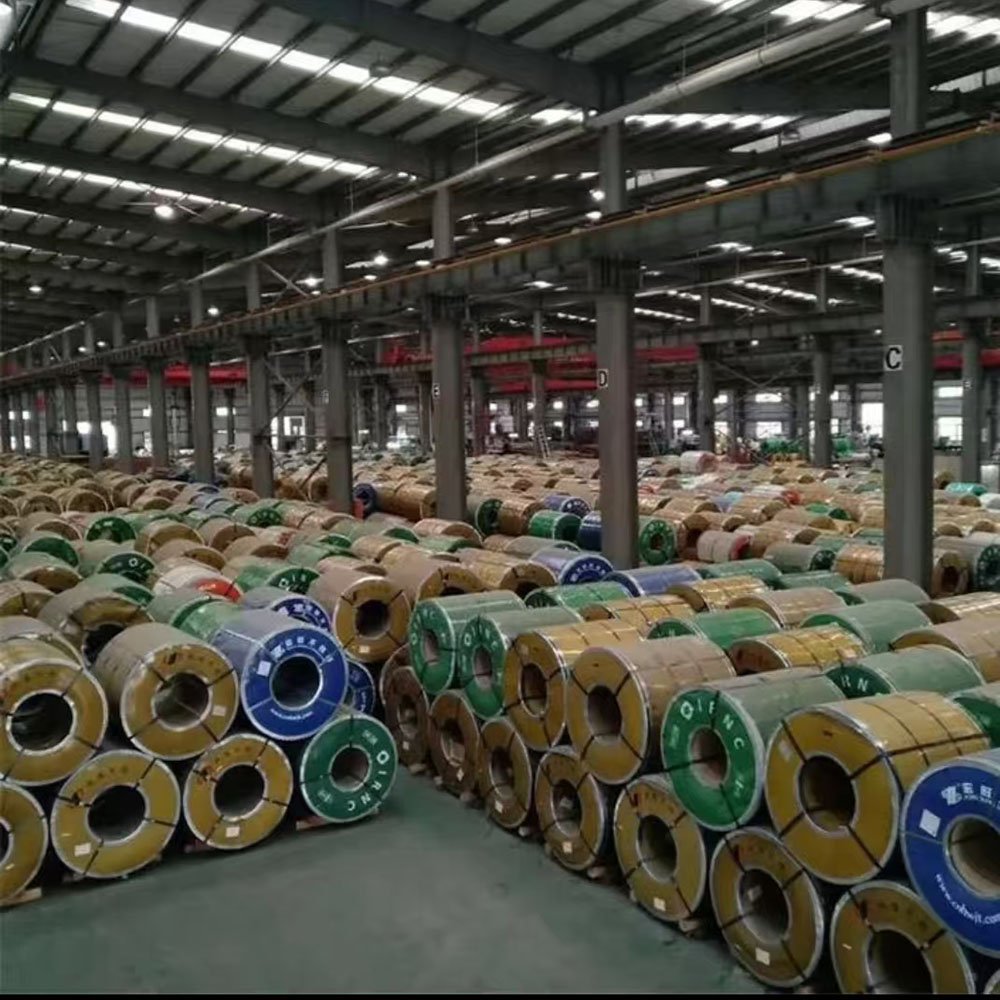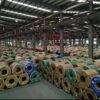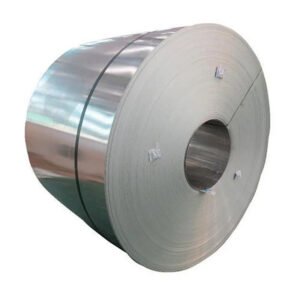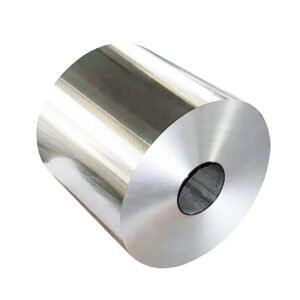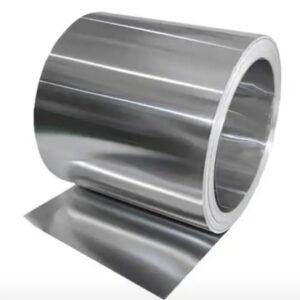SS304L stainless steel coil is a low-carbon stainless steel material, and its characteristics are mainly reflected in the following aspects:
Chemical composition:
The chemical composition of SS304L stainless steel coil is similar to that of standard 304 stainless steel, but its carbon content is lower, usually not exceeding 0.03%. This makes SS304L less likely to produce carbide precipitation during welding, thereby reducing the risk of intergranular corrosion.
Its main components include 18% chromium and 8% nickel, as well as other trace elements such as manganese, silicon, phosphorus and sulfur.
Physical properties:
Density: The density of SS304L stainless steel is about 7.85 g/cm3.
Magnetic properties: SS304L stainless steel is austenitic stainless steel and is usually non-magnetic.
Mechanical properties:
Strength: The tensile strength and yield strength of SS304L stainless steel are relatively high, and it can withstand large mechanical loads.
Plasticity: SS304L stainless steel has good ductility and plasticity, and can be formed and processed by cold working and hot working.
Hardness: SS304L stainless steel has moderate hardness and is easy to process and form.
Corrosion resistance:
SS304L stainless steel has excellent corrosion resistance and can resist corrosion from most corrosive media such as acids, alkalis, and salts.
In the presence of chloride ions, the corrosion resistance of SS304L stainless steel is better than that of standard 304 stainless steel because its low carbon content reduces the risk of intergranular corrosion
Thermal stability:
SS304L stainless steel has good thermal stability and can maintain its corrosion resistance and mechanical properties in high temperature environments. It is also relatively good in high temperature resistance, which can be as high as 1000-1200 degrees
Welding performance:
SS304L stainless steel has good welding performance and can be welded by common welding methods (such as arc welding, TIG welding, MIG welding, etc.). The welded joints have high strength and corrosion resistance
Application areas:
SS304L stainless steel coils are widely used in automotive accessories, hardware tools, petrochemicals, food industry, construction engineering, marine industry, nuclear power, aerospace, machinery manufacturing, container manufacturing, ships and bridges, etc.
| Nombre del producto | Bobina/tira de acero inoxidable |
| Estándar | ASTM,JIS,DIN,GB,AISI,DIN,EN |
| Material | 201, 202, 301, 301L, 304, 304L, 316, 316L, 321, 310S, 904L, 410, 420J2, 430, 2205, 2507, 321H, 347, 347H, 403, 405, 409, 420, 430, 631, 904L, 305, 301L, 317, 317L, 309, 309S 310 |
| Técnica | Estirado en frío, Laminado en caliente, Laminado en frío y Otros. |
| Anchura | 6-12 mm o personalizable |
| Espesor | 1-12 mm o personalizable |
| Longitud | 1000 - 6000 mm o personalizable |
| Tratamiento de superficies | BA/2B/NO.1/NO.3/NO.4/8K/HL/2D/1D |
| Origen | China |
| Código SA | 7219131200 |
| Plazo de entrega | {Tiempo de entrega} |
| Servicio posventa | 24 horas en línea |
| Capacidad de producción | {Capacidad de producción} |
| Condiciones de precio | EXW, FOB, CIF, CRF, CNF u otros. |
| Puerto de carga | {Puerto} |
| Plazo de pago | TT, LC,Efectivo, Paypal, DP, DA,Western Union u Otros. |
| Aplicación | 1. Vajilla, armarios, tuberías interiores, calentadores de agua, calderas, bañeras |
| 2. Piezas de automóvil | |
| 3. Equipamiento médico, materiales de construcción, productos químicos, industria alimentaria, agricultura, componentes navales, etc. | |
| Embalaje | Paquete, bolsa de PVC, cinturón de nylon, atadura de cables, paquete marítimo de exportación estándar o como petición. |
| Servicio de tramitación | Doblado, soldadura, desbobinado, punzonado, corte y otros. |
| Tolerancia | ±1% |
| MOQ | {MOQ} |
Composición del acero inoxidable
El acero es una aleación de hierro y carbono. Los aceros inoxidables son aceros que contienen al menos 10,5% de cromo, menos de 1,2% de carbono y otros elementos de aleación. La resistencia a la corrosión del acero inoxidable y
Las propiedades mecánicas pueden mejorarse aún más añadiendo otros elementos, como níquel, molibdeno, titanio, niobio, manganeso, etc.
| Grado | C | Si | Mn | P | S | Cr | Ni | Mo | N | Cu |
| 201 | ≤0.15 | ≤0.75 | 5.5~7.5 | ≤0.060 | ≤0.03 | 16.00~18.00 | 3.5~5.5 | – | – | 0.08 |
| 202 | ≤0.15 | ≤1.00 | 7.5~10.00 | ≤0.060 | ≤0.03 | 17.00~19.00 | 4.0~6.0 | – | ≤0.25 | |
| 301 | ≤0.15 | ≤1.00 | ≤2.00 | ≤0.045 | ≤0.03 | 16.00~18.00 | 6.00~8.00 | – | ||
| 302 | ≤0.15 | ≤1.00 | ≤2.00 | ≤0.035 | ≤0.03 | 17.00~19.00 | 8.00~10.00 | – | ||
| 304 | ≤0.07 | ≤1.00 | ≤2.00 | ≤0.045 | ≤0.03 | 18.00~20.00 | 8.00~10.50 | – | ||
| 304L | ≤0.030 | ≤1.00 | ≤2.00 | ≤0.045 | ≤0.03 | 18.00~20.00 | 9.00~13.00 | – | ||
| 310S | ≤0.08 | ≤1.00 | ≤2.00 | ≤0.045 | ≤0.03 | 24.00~26.00 | 19.00~22.00 | – | ||
| 316 | ≤0.08 | ≤1.00 | ≤2.00 | ≤0.045 | ≤0.03 | 16.00~18.00 | 10.00~14.00 | 2.00~3.00 | ||
| 316L | ≤0.03 | ≤1.00 | ≤2.00 | ≤0.045 | ≤0.03 | 16.00~18.00 | 12.00~15.00 | 2.00~3.00 | ||
| 321 | ≤0.08 | ≤1.00 | ≤2.00 | ≤0.045 | ≤0.03 | 17.00~19.00 | 9.00~13.00 | – | ||
| 430 | ≤0.12 | ≤0.75 | ≤1.00 | ≤0.040 | ≤0.03 | 16.00~18.00 | – | |||
| 2205 | ≤0.03 | ≤1.00 | ≤2.00 | ≤0.030 | ≤0.015 | 22.00~23.00 | 4.5~6.5 | 2.5~3.5 | ||
| 2507 | ≤0.03 | ≤0.08 | ≤1.20 | ≤0.035 | ≤0.015 | 24.00~26.00 | 6.00~8.00 | 3.0~5.0 | ||
| 904L | ≤0.02 | ≤1.00 | ≤2.00 | ≤0.045 | ≤0.035 | 19.00~23.00 | 23.00~28.00 | 4.0~5.0 | 1.0~2.0 | |
| INCONEL028 | ≤0.03 | ≤1.00 | ≤2.50 | ≤0.030 | ≤0.030 | ≤28.0 | ≤34.0 | ≤4.0 | ≤1.4 | |
| MONEL400 | ≤0.30 | ≤0.5 | ≤2.00 | – | ≤0.024 | – | ≥63.0 | – | ≤34.0 | |
| INCONEL800 | ≤0.10 | ≤1.00 | ≤1.50 | – | ≤0.015 | ≤23.0 | ≤35 | 4.0~5.0 | – | ≤0.75 |
Selección de superficies
